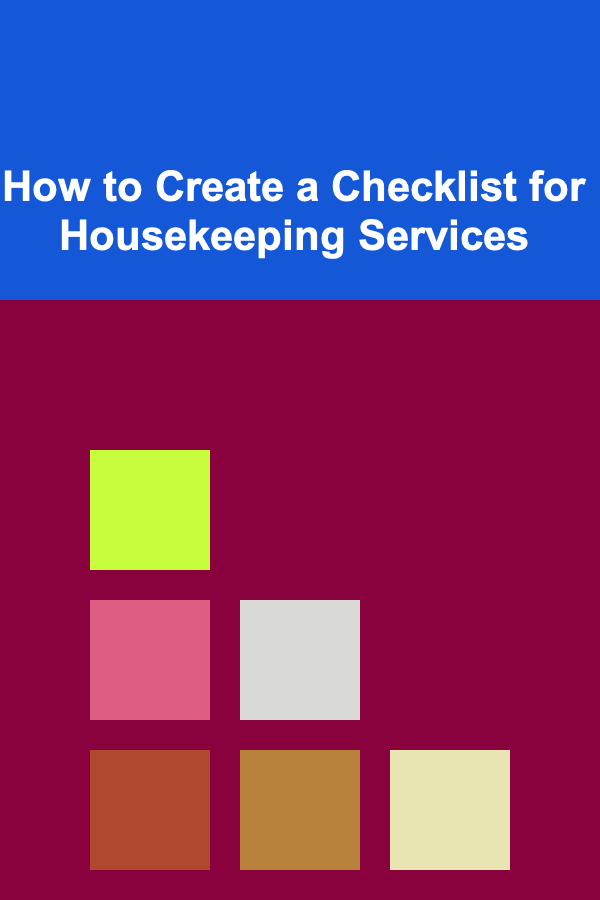
10 Creative Planner Spreads for Bill Payment Success
ebook include PDF & Audio bundle (Micro Guide)
$12.99$8.99
Limited Time Offer! Order within the next:
Not available at this time

Managing bills can feel like an overwhelming task, especially when multiple due dates, amounts, and payment methods are involved. One of the best ways to stay on top of your finances is by using a planner to organize and track your bill payments. However, it's not just about writing down the due dates and amounts --- a planner can be an excellent tool for motivating you to stick to a budget, stay organized, and feel in control of your finances.
In this article, we'll explore 10 creative planner spreads that can help you achieve bill payment success. Whether you're using a traditional paper planner, a bullet journal, or a digital tool, these spreads can help you break down the task of paying bills into manageable steps, track progress, and stay ahead of deadlines.
Bill Payment Tracker
A bill payment tracker is a straightforward, no-fuss spread that helps you track your bills throughout the month. The goal of this spread is to give you a clear visual representation of what you need to pay, when it's due, and whether or not you've already paid it.
How to Set It Up:
- Create a table with columns for the following: Bill Name , Due Date , Amount Due , Amount Paid , and Payment Status (paid/unpaid).
- Fill in the details for each of your recurring bills (utilities, rent, subscriptions, loans, etc.).
- Leave space to mark when a bill is paid (checkboxes, Xs, or stickers).
Why It Works:
- Visual Clarity: The tracker allows you to see exactly what bills are coming up and what's already been paid, so nothing falls through the cracks.
- Accountability: It holds you accountable for meeting your payment deadlines, reducing late fees and stress.
- Motivation: Checking off bills once they're paid gives a sense of accomplishment and reinforces the habit of staying on top of your finances.
Monthly Budget and Bill Payment Overview
Sometimes, the challenge with bill payments is not just remembering when to pay but ensuring you have enough funds available. A monthly budget overview combined with bill payments allows you to see the bigger picture.
How to Set It Up:
- Create two sections: one for your Income and another for your Expenses.
- List all your bills under the "Expenses" section and include amounts for each.
- Add a category for Miscellaneous or Savings.
- Deduct the total expenses from your income to see how much you have left after your bills are paid.
Why It Works:
- Financial Control: By pairing your bill payments with a budget overview, you'll have a clear picture of your financial health.
- Prioritization: It helps you prioritize essential bills, such as rent and utilities, and gives you space to plan for optional expenses.
- Oversight: You can see if you're spending too much or falling behind, and adjust your behavior accordingly.
Debt Repayment Tracker
If you're paying off debt, staying organized with your payments is crucial. A dedicated debt repayment tracker in your planner can help you visualize your progress and keep you motivated to meet your financial goals.
How to Set It Up:
- Make a list of all your debts, including credit cards, student loans, and personal loans.
- Create columns for Debt Name , Amount Owed , Monthly Payment , Interest Rate , Balance Remaining , and Payment Status.
- Include a section where you can track any extra payments you make or when you pay off a debt completely.
Why It Works:
- Motivation: Tracking your progress shows how much you've paid off and how much is left, motivating you to continue.
- Reduced Stress: It provides clarity about how your debt is being managed and makes it easier to set priorities.
- Celebration: Paying off a debt is a huge accomplishment, and tracking it allows you to celebrate each milestone.
Weekly Bill Payment Checklist
For those who prefer smaller tasks spread throughout the week rather than one large task at the end of the month, a weekly bill payment checklist is an excellent option. This spread helps you break down bill payments into manageable steps throughout the month.
How to Set It Up:
- Divide your planner page into weekly sections.
- For each week, list the bills that are due or should be paid during that week.
- Include checkboxes next to each item so you can check off payments as you complete them.
Why It Works:
- Reduces Overwhelm: Instead of looking at all your bills at once, this spread allows you to tackle them in smaller chunks.
- Consistent Action: By incorporating bill payments into your weekly routine, you create consistent habits that help you stay on top of payments.
- Flexibility: If you have multiple bills that vary in amount or due date, this spread gives you the flexibility to adjust your payment schedule.
Bill Payment Due Date Countdown
If you struggle with keeping track of due dates or tend to procrastinate, a due date countdown can be a fun and effective spread. By visually counting down the days until your bills are due, you're more likely to take timely action and avoid late fees.
How to Set It Up:
- Create a simple chart or list with each of your bills and their due dates.
- Next to each bill, leave space to write the number of days remaining until the payment is due.
- Each day, update the countdown to stay on top of your due dates.
Why It Works:
- Sense of Urgency: The countdown acts as a reminder and adds a sense of urgency to prevent last-minute scrambling.
- Clarity: It's easier to see how much time you have before each bill is due, helping you avoid missing deadlines.
- Rewarding: Marking off each day or completing payments on time can feel rewarding as you cross the countdown off.
Bill Payment Stickers or Visual Markers
Sometimes, adding a bit of creativity and fun to the process can make bill payments feel less like a chore. Using colorful stickers or other visual markers to track bill payments in your planner can make the process more enjoyable and engaging.
How to Set It Up:
- Use fun stickers to represent different bills or payment statuses (e.g., a green checkmark sticker for a paid bill, a red sticker for a bill that needs attention).
- Color-code your bills by category (utilities, subscriptions, loans, etc.) for quick reference.
- You can also use icons or shapes (like stars or arrows) to indicate priority or important payments.
Why It Works:
- Engagement: Adding stickers or visual markers to your planner turns a mundane task into something fun and engaging.
- Quick Identification: Visual markers make it easy to identify the status of bills at a glance, so you can quickly know what needs attention.
- Personalization: It allows you to make the process more personalized to your tastes, making it less stressful.
Quarterly Bill Review and Payment Plan
If you're someone who likes to think long-term, a quarterly bill review spread can help you plan and assess your bills every few months. It gives you an opportunity to see which bills can be reduced, renegotiated, or eliminated, and it ensures that you're optimizing your payments.
How to Set It Up:
- Create a section in your planner that covers the next three months.
- List out your bills, due dates, and amounts for each of the upcoming months.
- Add a column for notes where you can write any changes or adjustments (e.g., bill increases, new subscriptions, etc.).
- Use this section to evaluate which bills are essential and which ones you might be able to adjust.
Why It Works:
- Financial Health: It allows you to track recurring bills over time and make necessary adjustments for your financial well-being.
- Informed Decisions: This spread can help you evaluate if you're overpaying for services or if there are opportunities to save.
- Long-Term Planning: Instead of reacting to bills as they come, you can proactively plan and optimize your payments.
Yearly Bill Payment Summary
A yearly bill payment summary is perfect for those who want to reflect on their overall financial picture at the end of the year. This spread helps you see how much you've spent on bills over the year, giving you insights into areas where you may want to cut back or invest more.
How to Set It Up:
- List your recurring bills for the year (e.g., rent, utilities, insurance, subscriptions).
- Track the total amount spent on each bill for the year.
- Add a section for year-end reflections or notes on how your payments have changed.
Why It Works:
- Tracking Progress: You can see whether you've been able to reduce certain bills or if there are areas where spending has increased.
- Reflective: It gives you an opportunity to reflect on your financial habits and adjust them for the upcoming year.
- Financial Insight: Knowing how much you've spent in each category helps you make better financial decisions.
Bill Payment Color-Coding System
Color-coding your bills adds an additional layer of organization and makes it easy to prioritize payments at a glance. By associating different colors with types of bills or payment statuses, you can streamline the payment process and keep everything clear.
How to Set It Up:
- Assign each type of bill a color (e.g., blue for utilities, green for subscriptions, yellow for loans).
- Use colored pens or markers to highlight or color in each bill.
- You can also color-code payment status (e.g., red for overdue, green for paid, orange for pending).
Why It Works:
- Quick Recognition: Color-coding makes it easier to spot which bills need attention.
- Organization: It helps visually organize your finances, so you can focus on the most pressing payments first.
- Stress Reduction: The visual appeal of color can make the process of paying bills feel less stressful and more manageable.
Bill Payment Rewards Tracker
Finally, a bill payment rewards tracker can be a fun and motivating way to stay on top of your payments. This spread allows you to reward yourself for staying consistent and for making payments on time, whether through tangible rewards or personal incentives.
How to Set It Up:
- Create a section where you can set personal rewards for making bill payments.
- For each bill paid, you can mark it off or add a point.
- Once you reach a certain number of points, treat yourself to something small, like a favorite snack, an activity, or even a new planner accessory.
Why It Works:
- Incentivization: Giving yourself a reward reinforces good behavior and turns paying bills into a more enjoyable experience.
- Positive Reinforcement: It builds a habit of paying bills on time while making the process feel less like a chore.
- Fun: It adds a playful element to financial tasks, making them feel less burdensome.
Conclusion
These 10 creative planner spreads provide a variety of approaches to organizing your bill payments, managing your budget, and staying on top of your finances. Whether you're someone who thrives on structure and organization or you prefer a more creative and fun approach, there's a spread for everyone. Experiment with different layouts and ideas to find what works best for you, and watch as your financial organization improves, bringing you peace of mind and greater financial success.

How to Build a Shipping Checklist for Ensuring Proper Packaging
Read More
How to Create a Checklist for Housekeeping Services
Read More
How to Use Hidden Storage Spaces in Your Home
Read More
How To Make Your Own Signature Coffee Blend
Read More
How To Create Viral Social Media Campaigns
Read More
How to Play Retro Arcade Games: A Deep Dive into a Golden Age
Read MoreOther Products

How to Build a Shipping Checklist for Ensuring Proper Packaging
Read More
How to Create a Checklist for Housekeeping Services
Read More
How to Use Hidden Storage Spaces in Your Home
Read More
How To Make Your Own Signature Coffee Blend
Read More
How To Create Viral Social Media Campaigns
Read More